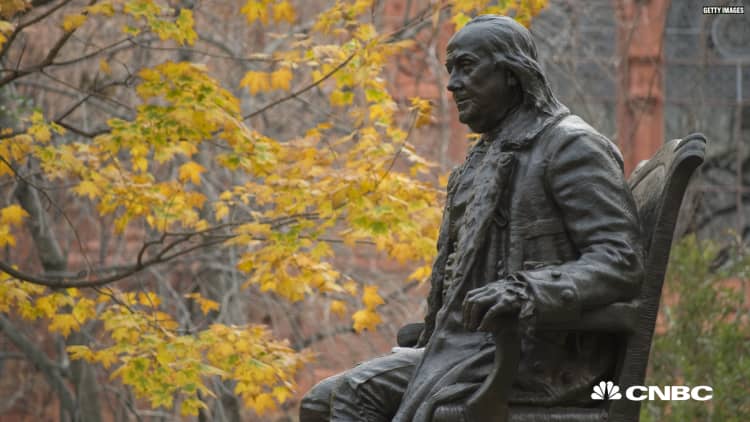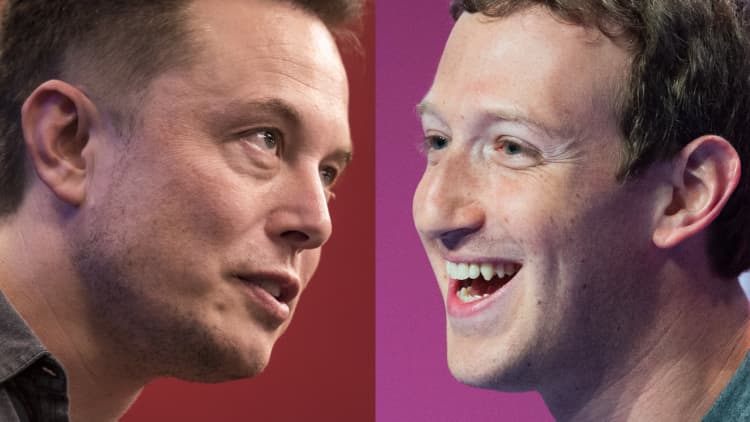If it were anyone else, the notion of digging hundreds of miles of tunnels to create a new subterranean transportation network under congested cities would seem like pure science fiction.
But the dreamer behind this vision is Elon Musk, the billionaire innovator who has already shown with his Tesla electric cars and SpaceX rockets that he thinks big and doesn't wait for others to transform fantasy into reality.
Once again, Musk is aiming to shake up an arcane industry not used to outside-the-box thinking and yet potentially ripe for disruption: the underground world of tunneling.
More from USA Today:
No, that wasn't a driverless car driving around Washington
CVS Health store customers down as competition heats up, discounts drop
Analysis: Toyota-Mazda plant deal shows how rivals can be buddies
He could use tunneling to achieve his moonshot goal of clearing up Los Angeles traffic. It also could be employed to build a "hyperloop" system — a passenger capsule that magnetically levitates inside a tube to achieve high speeds — that would run 226 miles from New York to Washington, D.C. Travel time: 29 minutes.
Musk hopes to dramatically speed up digging by inventing new tunnel-boring-machine technology that could slash billions from a major project.
Tunneling is big business. In the U.S. and Canada alone, there are about 60 major tunnel projects in the planning or design phase totaling more than 1.8 million feet, according to the Underground Construction Association of the Society for Mining, Metallurgy and Exploration.
Although mass-transit proponents, tunnel machine companies and industry experts say the hurdles are enormous, Musk is bringing together the people and machinery to make his vision a reality.
The problem: Using existing technology, digging a tunnel from New York to D.C. could take nearly 100 years.
It seems like a challenge tailor-made for Musk who, having moved heavens with his space business, now seeks to move earth.
"Building a tunnel boring machine is as complicated as building a rocket," said Gary Brierley, a tunneling consultant and former president of the American Underground Construction Association whose professional nickname is Doctor Mole. "I hate to say this, but I think rockets are kind of easy compared to tunnels."
Brierley's logic? Rockets fly through the air and space, which is fairly predictable in composition. But digging tunnels requires navigating unforeseen rocks, soil, water, contamination and man-made objects. Musk will also need to figure out how to make sure nearby structural foundations are not disturbed.
To get started, Musk has assembled a stealth team of advisers to form The Boring Company and acquired a 14-foot-diameter tunnel machine from Menomonee Falls, Wis.-based Super Excavators, USA TODAY learned. He is using the machine to start digging a pilot hole next to SpaceX's factory in the Los Angeles suburb of Hawthorne, Calif.
For now, The Boring Co. is staying quiet about its plans. It declined to comment for this story. But its challenge is clear.
Today's best machines can dig at a rate of about 1/10th of a mile per week, up from a few feet per day several decades ago, said Mike Mooney, director of the Center for Underground Tunneling and SmartGeo at the Colorado School of Mines. But many machines are slower.
For example, Washington, D.C.'s water system bought tunnel-boring machines — nicknamed Lady Bird, Nannie and Lucy — that ranged in speed from 18 feet per day to 57 feet per day for a recent phase of a project aimed at curbing sewer runoff into local waterways. At nearly 4.6 miles, the longest tunnel took about two years.
But Musk is aiming for a more than 10-fold improvement. Current machines, which often cost tens of millions, top out at a few hundred feet per day, but Mooney speculated that a mile per week is possible. At that rate, the hyperloop tunnel would take just over four years to dig.
Speeding up to that pace would dramatically reduce the billions in cost in tunneling, making Musk's hoped-for hyperloop project more realistic.
Industry leaders said there's room for innovation, particularly if Musk can develop a machine that tunnels through the earth while building retaining walls at the same time, a feat that most tunnel boring machines cannot accomplish today.
"That would be a pretty cool innovation," said Carlton Ray, director of the D.C. Water system's Clean Rivers Project.
Critics say Musk should focus on improving the transportation systems that are already in place — and in need of improvement — just as he has tackled creating a mass-market electric car with self-driving capability for Tesla.
Musk's plan is a "distraction" from the substantive issues at hand involving roads and railways, said Robert Puentes CEO of the Eno Center for Transportation.
Obstacles
Musk faces a raft of obstacles:
• Costs. Underground infrastructure is typically many times more expensive than above-ground infrastructure, which is why most parking garages are above ground and most passageways across rivers are bridges, not tunnels.

In addition to the cost of digging, tunnel contractors must build escape routes, prevent local structures from moving during digging and avoid triggering environmental problems.
• Bureaucracy. Tunnel companies say securing the necessary approvals from transportation agencies, environmental regulators and property owners can take longer than actually digging the tunnel.
"These tunnels are phenomenally expensive. The planning effort is phenomenally complex. Getting the permission is phenomenally complex," Brierley said.
Musk flummoxed the industry by tweeting in July that he had received "verbal" government approval for the hyperloop, without providing any details on what he meant. A White House spokesman said the Trump administration had had encouraging talks with Musk and The Boring Co. about the project.
•Technology. Boring through the earth faster requires finding a way to build retaining walls simultaneously. In most projects today, tunnel boring machines remove about five or six feet of earth before it must stop temporarily to build a retaining wall, Mooney said.
"It burrows through the ground, ingesting the material like an earthworm essentially does," Mooney said. "As it moves through the ground it then installs concrete rings behind it, to the rear end of the tunnel boring machine, and then pushes off that ring."
Boring and wall building simultaneously has been done in only a few instances throughout the world in soft-ground tunneling, experts said. For example, German tunnel boring machine maker Herrenknecht said it had done it in a project in the Netherlands in the late 1990s.

•Logistics. After a tunnel boring machine's steel cutter-head tears through the earth, workers must remove displaced soil, which requires extensive coordination and a system of conveyors or muck cars, which look like garbage dumps on a rail.
For a project the size of the NYC-to-D.C. hyperloop, simply extracting the dirt alone would be vexing.
"You'll need to figure out how to get rid of the muck," said D.C. Water's Ray.
But The Boring Co. believes the dirt excavation process can be transformed.
The company says on its website that it is "investigating technologies that will recycle the earth into useful bricks to be used to build structures."
•Geology. The earth, quite simply, is not predictable. Soil composition changes and crews often encounter unexpected things underground.
For example, an 8,000-ton machine nicknamed Bertha snagged on an unexpected piece of steel in December 2013 while boring a nearly 2-mile highway tunnel underneath downtown Seattle. The pipe casing, measuring 8 inches in diameter and 110 feet long, had apparently been installed in 2002 after an earthquake to gauge groundwater flow.
Work stopped for about two years while the steel was removed and the machine was rehabilitated.
"One of the clear things we know about tunneling is we're going through geology that's constantly changing, and the ground you tunnel through plays a big role in how fast you can go," Mooney said.
The future
Musk's vision came about after he was overwhelmed with frustration at traffic and tweeted a vision of digging a network of tunnels underneath Los Angeles last December. It would whisk cars from place to place at high-speeds while riding atop platforms.
Soon after that, he pitched the underground tunnel in the Northeast as a way to commercialize his previously laid-out vision for the hyperloop. Such far-fetched ideas are easily dismissed from others. Because of his track record, Musk is taken seriously.
"If his dreams are realized, we believe it could bring about dramatic social and economic changes," said Takashi Hayato, president of the U.S. subsidiary of Japan-based manufacturer Hitachi Zosen, which made Seattle's Bertha.
Andreas Nordbrandt, president of Swedish manufacturer Atlas Copco's Underground Rock Excavation division, which makes devices that drill tunnels by blasting through rock, said the industry must remain "humble" and not dismiss Musk's ambitions.
He's "maybe not 100 percent right, but at least on the right track," Nordbrandt said.
Like this story? Like CNBC Make It on Facebook.
Don't miss:


